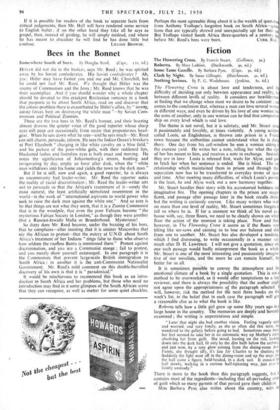Ballet : Doubtful Judgements
Modern English Ballet. By Fernau Hall. (Melrose. 203.) PART of the value of Mr. Fernau Hall's book lies in its insistence upon the fact that the art of the dance travels naturally and inevit- ably in close relationship with the other arts. This 'emphasis—upon what should be a cOmmonplace—is by no means superfluous. Apart from those actively engaged in the production of ballet and a relatively small number of informed spectators, the public at large has not yet had time to appreciate that the choreographer's main purpose is not to present merely a charming spectacle any more than the painter's is to produce just a pleasing and decorative picture. A choreographer can no more afford to deny the " feeling in the air " than the citizen can to shut himself within his four walls ignoring the life around him. It is when. the former attempts this that his work appears still-born ; as the blurb of Modern English Ballet says, his fantasy " must have a solid basis in the realities of human experience."
It is difficult to ascertain for whom Mr. Hall has written his book. It is unlikely to be for professionals or students of ballet, as by now they must be heartily sick of the same old story from Noverre to Diaghilev ; nor could he mean to tell them that " Princess Ballet fell asleep amid dreams of empty splendour waiting for the kiss of charming Prince Fokine " or talk about " a ballet called La Sylphide." It seems, therefore, that it is dedicated to the vast number of people .whose increasing patronage and enthusiasm have made possible the spectacular rise of the art in this country. The purpose is good. The public needs and deserves guidance and as much serious writing as possible on an art which, until com- paratively recently, has in this country been only flippantly treated. But even to the professional Mr. Hall's book does not read easily. Ballet being the most evanescent of the arts, historians can Only weigh past achievements according to the writings of those who have recorded before them. The author has evidently studied these conscientiously, but his first fifty pages are dull and tiresome and his writing does not come to life until he starts dealing with contem- porary material. Then, according to the way he has decided to arrange his chapters, he repeats much of what he has already said and goes into superfluous detail which upsets the balance of the whole.
The main trouble with the book, however, is that it falls between two stools. Either it should have been impartially historical—as are C. W. Beaumont's books—or it should have been approached from the subjective and critical angle, as in Pre judice for Ballet by A. V. Coton, to which Mr. Hall frequently refers. For a writer on the art of the dance this clear line of demarcation is absolutely vital ; it is most dangerous to mix fact with personal judgement if the reader cannot verify this judgement before the work in question. Critics of literature, music and painting have no need to observe so rigid a rule because the objects of their discussion are permanent, but a great deal of the choreography mentioned by Mr. Hall has disappeared from the repertoires of today, and in any case, as he so rightly points out, balletic productions deteriorate— or at least change—almost from their initial performance. It is a pity the author has not confined himself to the valuable historical aspect, because his critical standards are shaky. He obviously has a very strong bias towards " free dancing " at the expense of ballet, and the disproportionate importance he attaches to certain choreo- graphers and dancers can, one feels, only be explained by an attraction drawing him to their personalities. It is difficult to have much faith in the values of a ballet critic who describes Celia Franca as " a pure classical dancer " and Beryl Grey as having difficulty in achieving the proper nobility in classic roles, and who places Robert Helpmann—as a dancer—" in a class by himself "; or, in the pictorial arts, to respect the opinion of someone who lightly dismisses Fragonard, Robert and Boucher as the producers of " sentimental paintings" and who thinks Rowlandson the best artist of his day." If it is possible for readers of the book to separate facts from critical judgements, then Mr. Hall will have rendered some service to English ballet ; if on the other hand they take all he says as gospel, then, instead of guiding, he will simply mislead, and where he has meant to elucidate he will find he has done little but



































 Previous page
Previous page